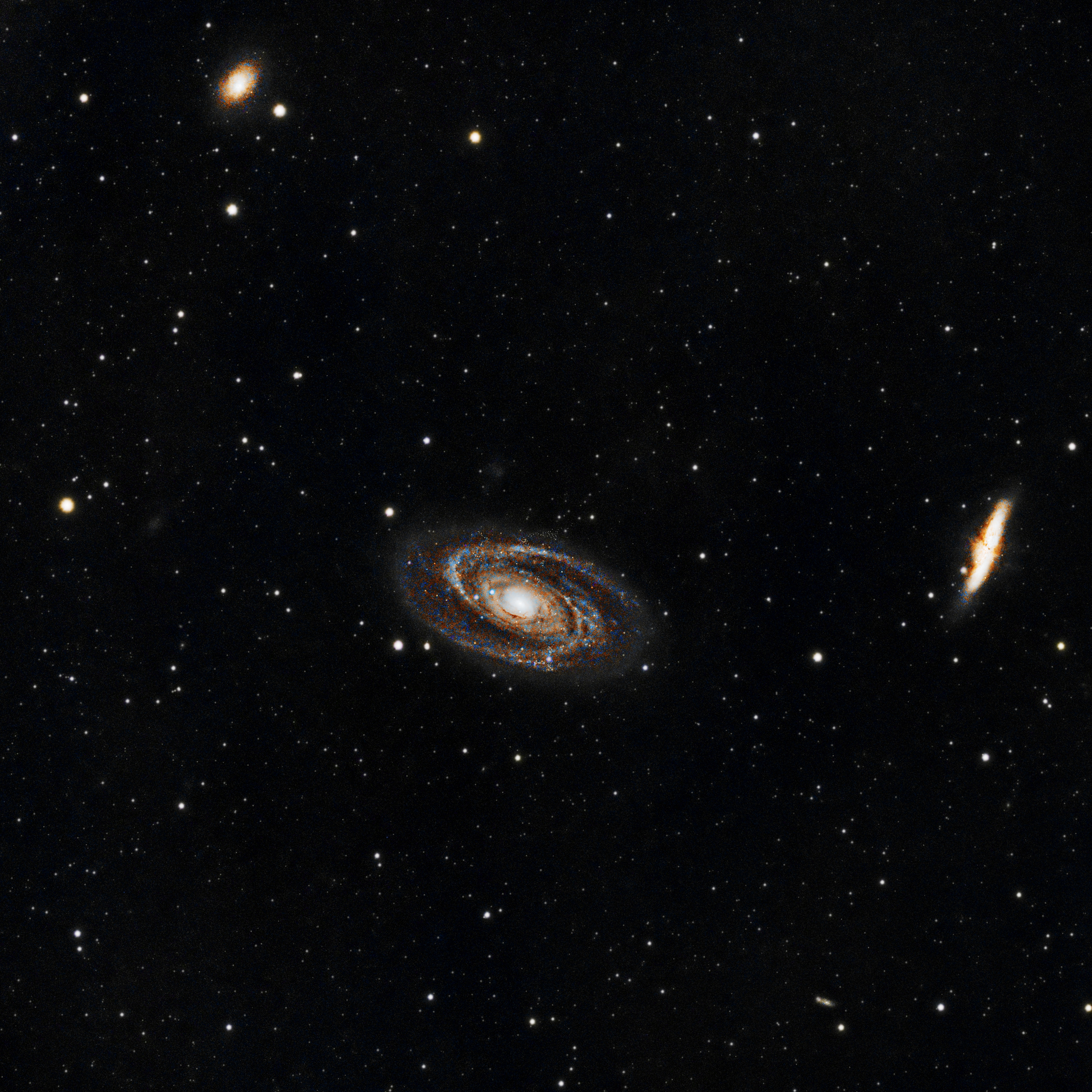Hello Stargazers!

Today’s image is a photo of Bode’s Galaxy. What’s the difference between a galaxy and a nebula like the Jellyfish or the Horsehead? Basically size. A galaxy is a huge collection of stars, planets, gas, and dust that are held together by gravity that can span up to hundreds of thousands of light years in diameter. Usually a galaxy is held together at its center by a supermassive black hole. In contrast, a nebula is typically made up of dust and gas (not stars and planets) and ranges from a few light years to several hundred light years across. They are often areas of new star formation or remnants of supernovae - dramatically exploded dead stars.
From an astrophotography standpoint, the name of the game is SNR - signal to noise ratio. Most nebulae are easier to image for me because they are made up primarily of only a few elements, so I can use heavy-duty filters that strip out street lights, city lights, the moon, etc. This leaves only the very narrow bandwidth of light that the nebula emits. That means I can lose very little signal but get rid of a whole lot of noise.
But a galaxy is made up of stars, and stars (like the Sun!) emit light across the entire visible spectrum, so using a filter strips out just as much signal as it does noise. New York City unfortunately emits a lot of the same spectrum of light as the stars in Bode’s Galaxy. For the same amount of imaging time, I get less relevant signal, and thus a less clear image. All that being said, I am still really happy with how this one turned out. This image was shot across two nights, one in April and one in June with a total of almost 7 hours of exposure.
Bode’s galaxy is a spiral galaxy with two huge spiral arms that are spinning around the supermassive black hole at the galaxy’s center. It was first discovered by German astronomer Johann Elert Bode in 1774. It’s about 12 million light years away from us on Earth, and it’s just a little smaller than the Milky Way. The second bright object off to the right is the Cigar Galaxy. This galaxy is forming new stars at one of the fastest rates in visible space. It has a unique shape due to distortions from this star creation and because we’re viewing it from an edge-on view.
I’m happy to get a new photo out there and I hope you enjoy it. Here it is again one more time.




Great to see you back at it, nice work and cool explanation. Got me looking up why galaxies were brighter at the center, even though that center point is a black hole. Who is doing this stuff in 1774?